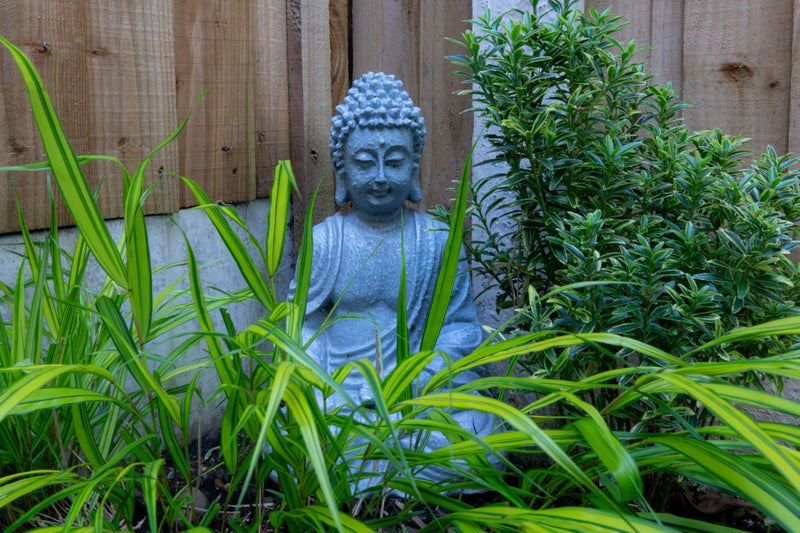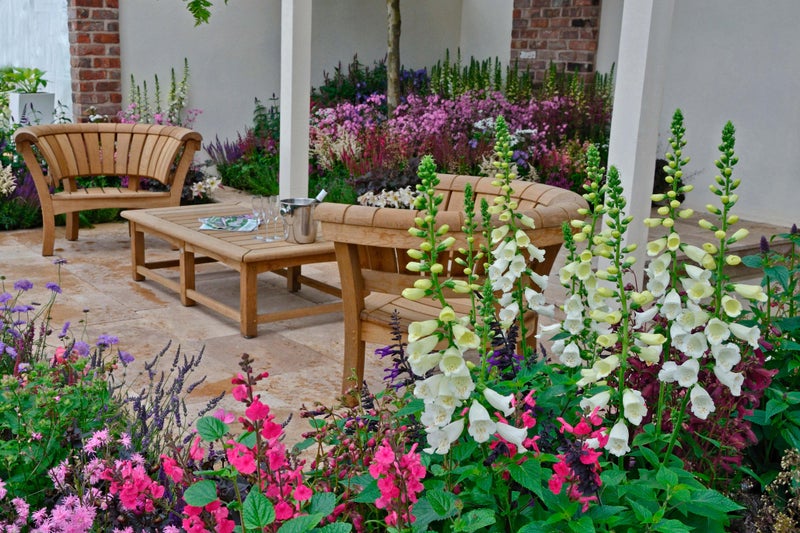SPRING is just weeks away – and below ground, your garden is getting ready for a glow-up. Whether you plant in pots on patios, on your windowsill, or in beautiful beds, there are jobs that need doing NOW to make your outside space look lovely this spring and summer. Plant vibrant blooms like ranunculus, sweet peas and wildflowers, while sneaking in herbs and edible flowers. Mulch creatively, upcycle quirky planters and start a bug hotel for helpful insects.
![[Lush garden landscaping in front of a house.]](https://www.thesun.co.uk/wp-content/uploads/2025/02/portland-oregon-united-states-972878827.jpg?strip=all&w=960)
Gardening needn’t be back-breaking, either. In fact, studies show that the activity reduces stress and anxiety, and can even boost sleep. So it’s an ideal way to banish those winter blues. Plus, none of these tips costs a lot of money – some are even free. If your green fingers are itching, Sun gardening editor Veronica Lorraine has ten jobs you can tackle right now. It’s time to think about all the glorious, showy flowers that will bring the biggest and best blooms to your outside space.
![[Child planting a seedling in a small metal pot.]](https://www.thesun.co.uk/wp-content/uploads/2025/02/NINTCHDBPICT000972877485.jpg?strip=all&w=960)
Many garden centres are doing the job for you, with bags of 100 to 300 summer bulbs starting to appear on the shelves. But if you prefer to make your own choices, flowers like begonias, gladioli, lilies, crocosmia, peonies and calla lilies are a good place to start. Get your collection together now and plant them as soon as the soil warms up – hopefully within the next few weeks. They look great in pots, or as part of a wider colour scheme in your garden.
![[Woman smiling in front of a floral display at Kew Gardens Orchid Festival.]](https://www.thesun.co.uk/wp-content/uploads/2025/02/veronica-lorraine-visits-years-kew-967934981_4e5e9a.jpg?strip=all&w=960)
Chances are you’ll have chucked all your tools in the back of the shed, caked in mud, with the best of intentions to clean them at the end of last summer. And they still look a sorry mess. But a good gardener never blames their tools and now is the time to get them all in order, ready for the growing season. You don’t need fancy oils. A squirt of WD40 is perfect for bringing the spring back, while sandpaper or iron wool, rubbed gently on tools, will get rid of rust. A cheap sharpening stone can get your secateurs and shears back on point.
![[Person holding a box of hyacinth bulbs.]](https://www.thesun.co.uk/wp-content/uploads/2025/02/woman-holding-box-hyacinth-bulbs-972878342.jpg?strip=all&w=960)
More likely than not, your grass is looking a little for-lawn, start thinking about getting it in order. There’s nothing wrong with cutting your grass now, despite what all the mowing companies claim. Just make sure you have your machine on the highest level and only mow when grass is dry. You can start sorting out the edges with a half moon tool to get a good, clean finish and repair the bare patches.
![[Gardening tools leaning against a brick wall.]](https://www.thesun.co.uk/wp-content/uploads/2025/02/spade-edging-tool-fork-shears-972878641.jpg?strip=all&w=960)
Finally, give it a good feed using autumn/winter fertiliser. Keep fallen leaves and other detritus off with regular raking and you should start to see the difference as the weather warms up. Our feathered friends are the perfect pest control – and now is the time to encourage them in, before they disappear off to nest. Put up bird feeders and nest boxes to keep them coming back for more and they’ll reward you by eating slugs, snails and plant-bothering insects during the year.
![[House wren feeding baby birds in a birdhouse.]](https://www.thesun.co.uk/wp-content/uploads/2025/02/house-wren-feeds-bug-baby-972879128.jpg?strip=all&w=960)
Nesting season starts around now and really picks up next month, so you want to have boxes in place for any feathered friends that are scoping out your space. Top tip: sparrows and most tits prefer small entrance holes. But robins, wrens and pied wagtails prefer open-fronted boxes. Place them at least a metre off the ground and don’t put them too close to bird feeders as the activity could disturb nesting pairs.
![[Person pruning hydrangea flowers with secateurs.]](https://www.thesun.co.uk/wp-content/uploads/2025/02/woman-pruning-hydrangea-flowers-secateurs-972879591.jpg?strip=all&w=960)
It’s time to sow sweetpeas. These fragrant beauties like space for their roots, so rather than splash out on deep pots, use old toilet roll tubes. You can then plant them straight in the soil without disturbing the new roots. The cardboard will rot down and add to your soil structure, so it’s a win-win. And you can plant garden peas for eating straight into the ground. $. Soak the seeds overnight to give them a good start. Ideally get your support in place when you plant them, rather than trying to work around the pea shoots when they’re bigger. Any old sticks will do, arranged in a teepee or A-frame shape.
![[Wooden planter box filled with colorful flowers.]](https://www.thesun.co.uk/wp-content/uploads/2025/02/NINTCHDBPICT000972877124_b9a30f.jpg?strip=all&w=960)
This is the perfect time to divide large clumps of snowdrops or ornamental grasses if you have them in your garden. Dig them up and use a sharp knife, a spade or a hori hori – a Japanese weeding knife – to split them into however many clumps you need, making sure the roots stay intact. Then replant them and voila – you have free plants! We’re also coming into Seed Swap time - so check your local social media groups to see who’s up for adding to their collection. It’s a great way of meeting like-minded people in your area as well.
February is a good time to get bare root roses in. These are roses that arrive without a pot or soil, with just their roots showing. Not only are they cheaper than pot-bound roses, but they often establish much quicker and grow faster. You’ve got a few more weeks to do this – just avoid planting them in waterlogged or frozen soil. They will start to come out of dormancy around March. While your roses, wisteria, grape vines, and apple and pear trees are dormant – meaning the period before they start growing again – cut them back with your newly sharpened secateurs.































